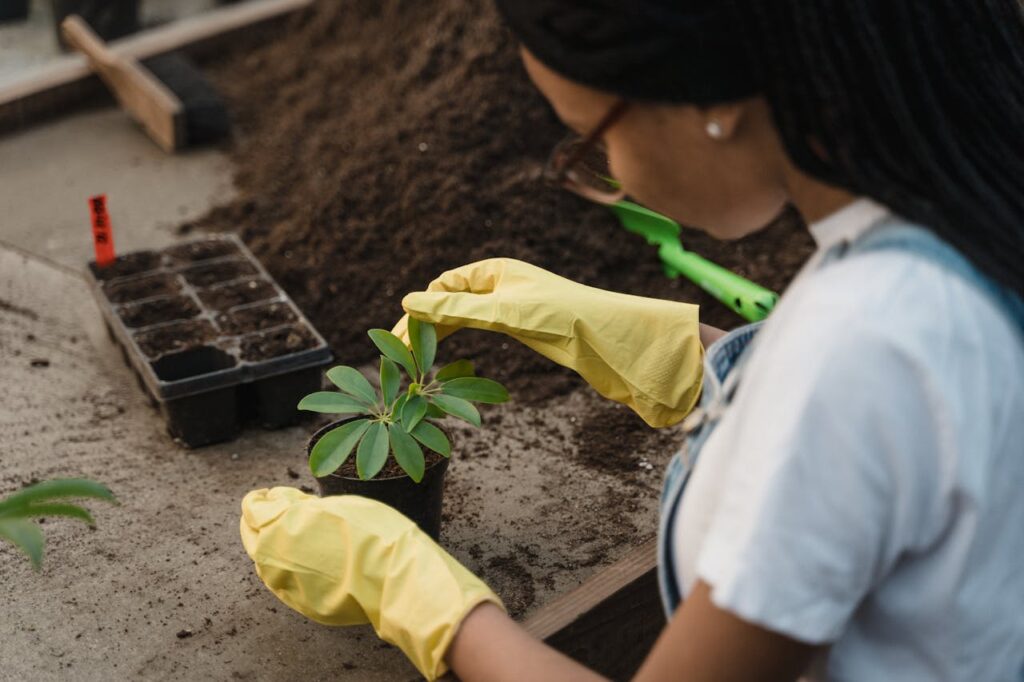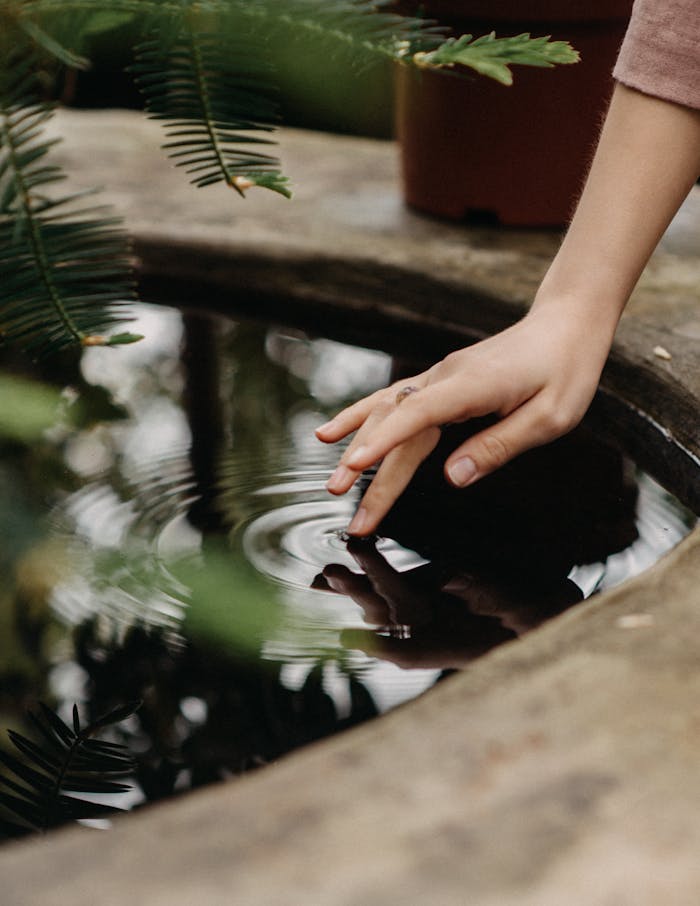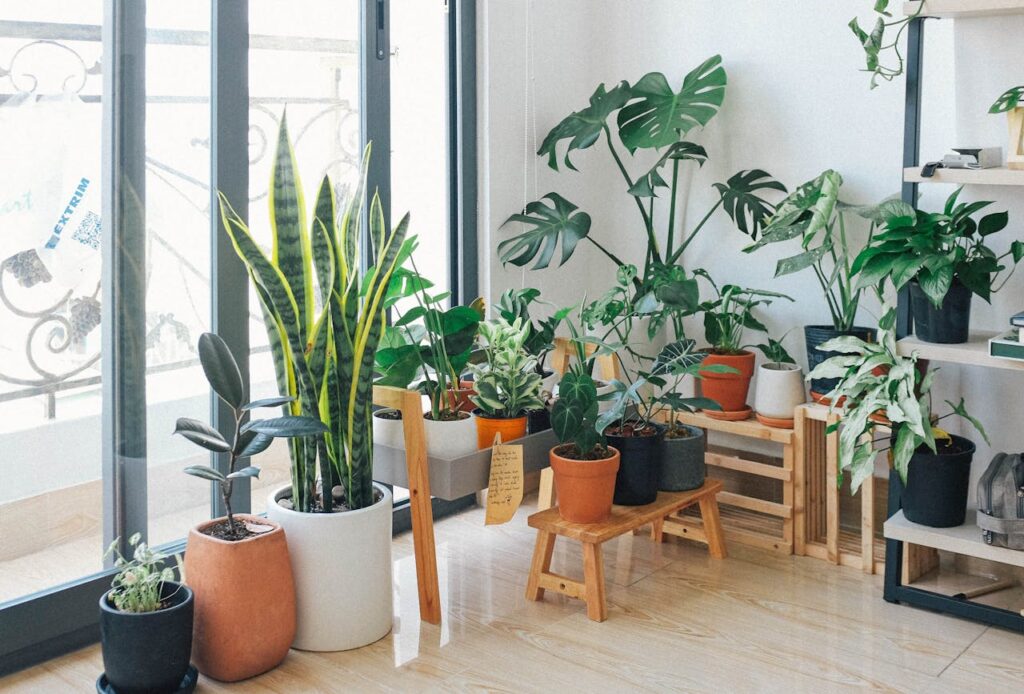Indoor air quality is crucial for maintaining a healthy living environment. With the increasing amount of time we spend indoors, ensuring that the air we breathe is clean and free of pollutants is more important than ever. One effective and aesthetically pleasing way to improve indoor air quality is by incorporating air-purifying indoor plants into your living space. These plants not only enhance the beauty of your home but also help to remove toxins, reduce pollutants, and improve overall air quality.
Why Indoor Air Quality Matters
Indoor air quality can significantly impact our health and well-being. Common indoor air pollutants include volatile organic compounds (VOCs), mold, dust, and pet dander. These pollutants can cause a range of health issues, from minor irritations to serious respiratory problems. By introducing air-purifying indoor plants into your home, you can naturally reduce the levels of these pollutants. Plants absorb harmful chemicals through their leaves and roots, improving the air quality and creating a healthier living environment.

Top Air-Purifying Plants for Your Home
Let’s explore some of the best air-purifying indoor plants that can help you achieve cleaner, fresher air in your living space.
- Spider Plant (Chlorophytum comosum): Spider plants are among the best indoor plants for clean air. They are easy to care for and highly effective at removing toxins such as formaldehyde and xylene from the air. Spider plants thrive in indirect light and require minimal watering, making them an excellent choice for beginners.
- Peace Lily (Spathiphyllum): Peace lilies are well-known houseplants that purify air efficiently. They are particularly good at removing VOCs, including benzene, formaldehyde, and trichloroethylene. Peace lilies prefer low to medium light and should be kept in a slightly moist environment. Their elegant white flowers also add a touch of beauty to any room.
- Snake Plant (Sansevieria trifasciata): Also known as the mother-in-law’s tongue, snake plants are low-maintenance air-purifying indoor plants. They are excellent at filtering out toxins such as formaldehyde, benzene, and xylene. Snake plants thrive in a variety of light conditions, from low to bright indirect light, and require infrequent watering.
- Aloe Vera: Aloe vera is not only known for its medicinal properties but also for its ability to improve indoor air quality. This succulent is effective at removing formaldehyde and benzene from the air. Aloe vera plants prefer bright, indirect light and minimal watering, making them easy to care for.
- English Ivy (Hedera helix): English ivy is a versatile and effective air-purifying plant. It is particularly good at reducing airborne mold and formaldehyde levels. English ivy can be grown in a variety of light conditions, though it prefers bright, indirect light. Regular watering and occasional pruning will keep this plant healthy and thriving.
- Boston Fern (Nephrolepis exaltata): Boston ferns are excellent natural air purifiers, particularly effective at removing formaldehyde and xylene. These ferns thrive in high humidity and indirect light, making them perfect for bathrooms and kitchens. Regular misting and watering will keep Boston ferns looking lush and vibrant.
- Areca Palm (Dypsis lutescens): The Areca palm is a beautiful and effective air-purifying indoor plant. It is known for its ability to remove toxins such as formaldehyde, xylene, and toluene from the air. Areca palms prefer bright, indirect light and should be watered regularly to maintain their health.
Choosing the Right Plant for Your Space
When selecting air-purifying indoor plants for your home, it’s important to consider factors such as light, humidity, and space. Different plants have different care requirements, and matching the right plant to the right room can ensure they thrive and effectively purify the air.
For low-light areas, such as bedrooms and offices, plants like the snake plant and peace lily are ideal choices. These plants can tolerate lower light levels and still perform their air-purifying duties effectively.
In higher humidity areas, such as bathrooms and kitchens, plants like the Boston fern and English ivy will thrive. These plants enjoy the moisture and can help reduce humidity levels while purifying the air.
For larger living spaces with ample light, the Areca palm and aloe vera can be excellent additions. These plants not only improve air quality but also add a touch of tropical elegance to your home.

How to Care for Your Air-Purifying Plants
Proper care is essential for maintaining healthy and effective air-purifying indoor plants. Here are some general care tips to keep your plants thriving:
- Watering: Most air-purifying plants prefer their soil to dry out slightly between waterings. Overwatering can lead to root rot, so it’s important to check the soil moisture before watering.
- Lighting: While some plants can tolerate low light, others require bright, indirect light to thrive. Be sure to place your plants in appropriate lighting conditions.
- Humidity: Many air-purifying plants prefer higher humidity levels. Regular misting or using a humidity tray can help maintain the necessary moisture levels.
- Fertilizing: Feed your plants with a balanced fertilizer every few months to ensure they receive the necessary nutrients.
- Pruning: Regularly trim dead or yellowing leaves to encourage new growth and maintain the plant’s appearance.
Additional Benefits of Indoor Plants
In addition to improving air quality, air-purifying indoor plants offer a range of other benefits:
- Aesthetic Benefits: Indoor plants can enhance the decor of any room, adding a touch of nature and beauty to your living space.
- Psychological Benefits: Studies have shown that indoor plants can reduce stress, boost mood, and improve overall mental well-being. The presence of greenery can create a calming and relaxing atmosphere.
- Practical Benefits: Some indoor plants, like the Areca palm and Boston fern, act as natural humidifiers, helping to maintain optimal humidity levels. Plants can also reduce noise levels by absorbing sound, making your home a quieter and more peaceful place.
Conclusion
Incorporating air-purifying indoor plants into your living space is a simple and effective way to improve indoor air quality. These plants not only remove harmful toxins from the air but also offer a range of aesthetic, psychological, and practical benefits. Whether you choose the low-maintenance snake plant, the elegant peace lily, or the versatile English ivy, there is an air-purifying plant that can fit perfectly into your home and lifestyle.
By selecting the right plants for your space and providing proper care, you can create a healthier and more beautiful living environment. So why not bring a touch of nature indoors and enjoy the benefits of air-purifying indoor plants?
Frequently Asked Questions (FAQs)
How many air-purifying indoor plants do I need?
The number of air-purifying plants needed can vary depending on the size of your space and the level of pollutants present. As a general rule, having at least one plant per 100 square feet can help improve air quality effectively.
Can air-purifying plants help with allergies?
Yes, some air-purifying plants can help reduce allergens such as mold and dust particles in the air. Plants like the English ivy are particularly effective at reducing airborne mold, which can alleviate allergy symptoms.
Are there any air-purifying plants that are pet-friendly?
While many air-purifying plants can be toxic to pets if ingested, there are pet-friendly options such as the spider plant and Boston fern. Always research a plant’s toxicity before bringing it into a home with pets.
How often should I replace or repot my indoor plants?
Indoor plants typically need to be repotted every 1-2 years, depending on their growth rate. Signs that your plant needs repotting include roots growing out of the drainage holes, slow growth, and compacted soil.
By integrating these air-purifying indoor plants into your home, you can enjoy cleaner air and a healthier living environment. Embrace the natural beauty and benefits that these plants bring, and create a sanctuary of fresh air and tranquility in your living space.


